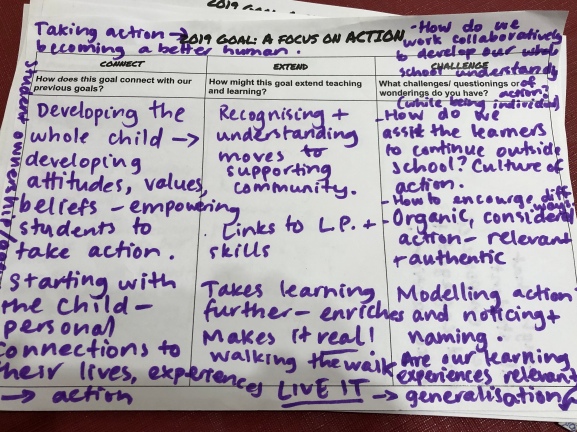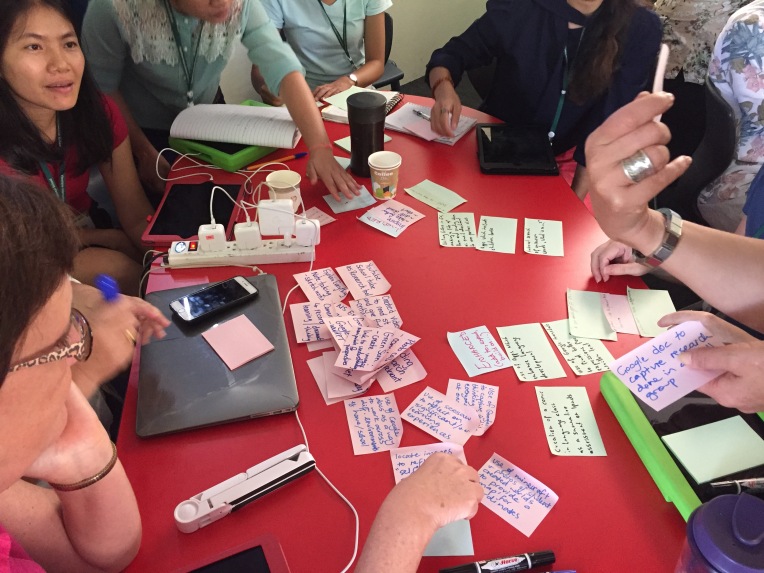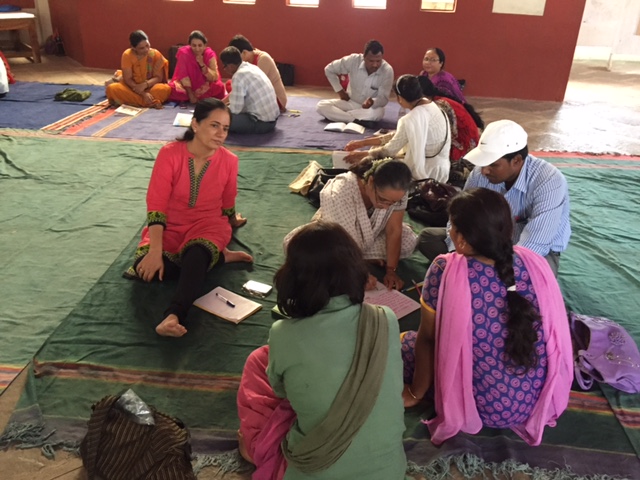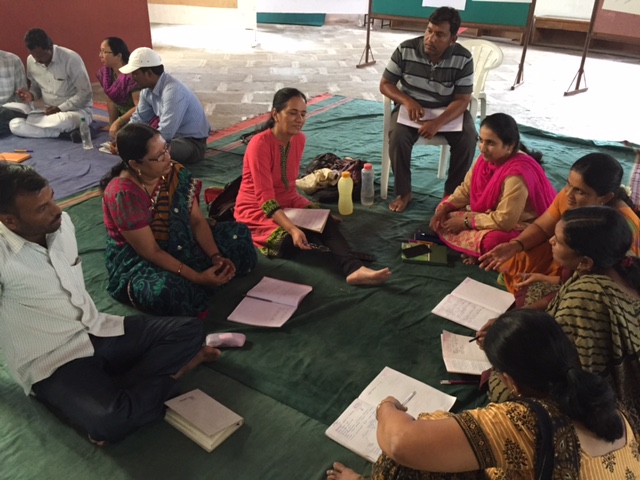“Cohesion is the powerful social glue that turns us from human beings into people. It is the glue that binds us to every element of our social context. When there is strong healthy cohesion in school communities, we feel connected to those around us; we’re on the same page with them. We feel we belong, that we are part of the team, with shared values and a shared sense of what is normal.”
Helen Street: CONTEXTUAL WELLBEING (Slightly adapted)
How might we build cohesion?
With ‘building cohesion’ as our 2020 focus, we started the year with a whole school workshop in which over 120 educators across disciplines and campuses connected and interconnected through a range of activities. Noticing and naming the ways they built cohesion, each time they changed groups during the morning, heightened awareness and highlighted transferable possibilities.
In groups, teachers shared a highlight from the holidays and something they hope for this year. Next we asked each person to consider and share a time when they felt a sense of belonging and identify common characteristics.
- Caring relationships
- Shared experiences
- Shared values
- Storytelling
- Active listening
- Deeper conversations
- Sense of connection
- Common purpose
- Choice and ownership
- Appreciation of each other
- Mutual trust
- Collaboration
- Authenticity
- Personal growth
- Non judgemental acceptance.
- Openness and support
- Playfulness
Co-developing this shared understanding of how it feels to belong will help us reflect on the extent to which these things are evident in our classrooms and in our learning community, and to recognise possibilities for improvement.



How might we build cohesion in our classrooms?
Many of us have already read and engaged with the content of the book ‘Contextual Wellbeing’ as a springboard for such reflections. Providing quotes such as those below helped provoke thinking and encourage a flow of ideas.
With any wellbeing program… teachers have to be careful not to counteract their positive impact with unnecessary class competition and inequitable teaching the rest of the time. As soon as students are pitted against each other with tests, awards or ability grouping, cohesion and positive relationships suffer. It is the power of ‘show over tell’: explicit teaching of social and emotional competencies has to be backed up with real life contextual wellbeing.
Teachers are under continual pressure to make headway with a dauntingly large curriculum, so it is a big ask that they regularly find time for gluing the class together. But that time willingly spent on building cohesion will save an enormous amount of wasted time and energy throughout the rest of the year. A happy class is a cohesive class is a productive class.
Norms and rules are not the same thing. It does not matter what rules apply to the classroom, it is the established norms that guide the behaviour of those who feel they belong. Rules are written down and made explicit whereas norms are established through the repetition of certain behaviours and reinforced with every element of social context. Norms are the true behavioural guides within any group.
Norms develop through repeating desired behaviours, and contextual support, not through repeated verbal reminders. The more a class follows the rules in their daily activities, the more likely the rules will become norms. It also follows that the more the rules are broken, the more ‘not following the rules’ will become the normal way to behave.
Rewards and punishments may bring a disruptive child to the river of compliance, but only cohesion will keep them drinking. Instead of ‘paying’ disconnected kids to behave, or threatening them if they don’t, we need to help them connect to a world where positive behaviour is normal.


How might we further extend the idea of building cohesion?
Teachers then engaged with a series of broader questions which emerged from our self study, addressing how we might build cohesion beyond our classrooms, in our curriculum, in our community and in our culture. Building cohesion in all these areas will be the theme and the through-line of our action plan as we move forward.

And what better way to build cohesion than to have a whole school inquiry, involving the entire learning community?
Central idea: Building community creates a sense of belonging.
Some of the lines of inquiry at different year levels include:
- how we build community through play
- how we learn together as a community
- the connection between place and community
- opportunities and challenges in building community
- parents as part of our learning community
- how we build relationships within our community
- diversity and commonality in our community
- the impact of restorative action on community
- how we co-construct our community
- the interplay between individuals and community
- the power of cohesion
What are some of the ways you build cohesion in your school or context?


















































